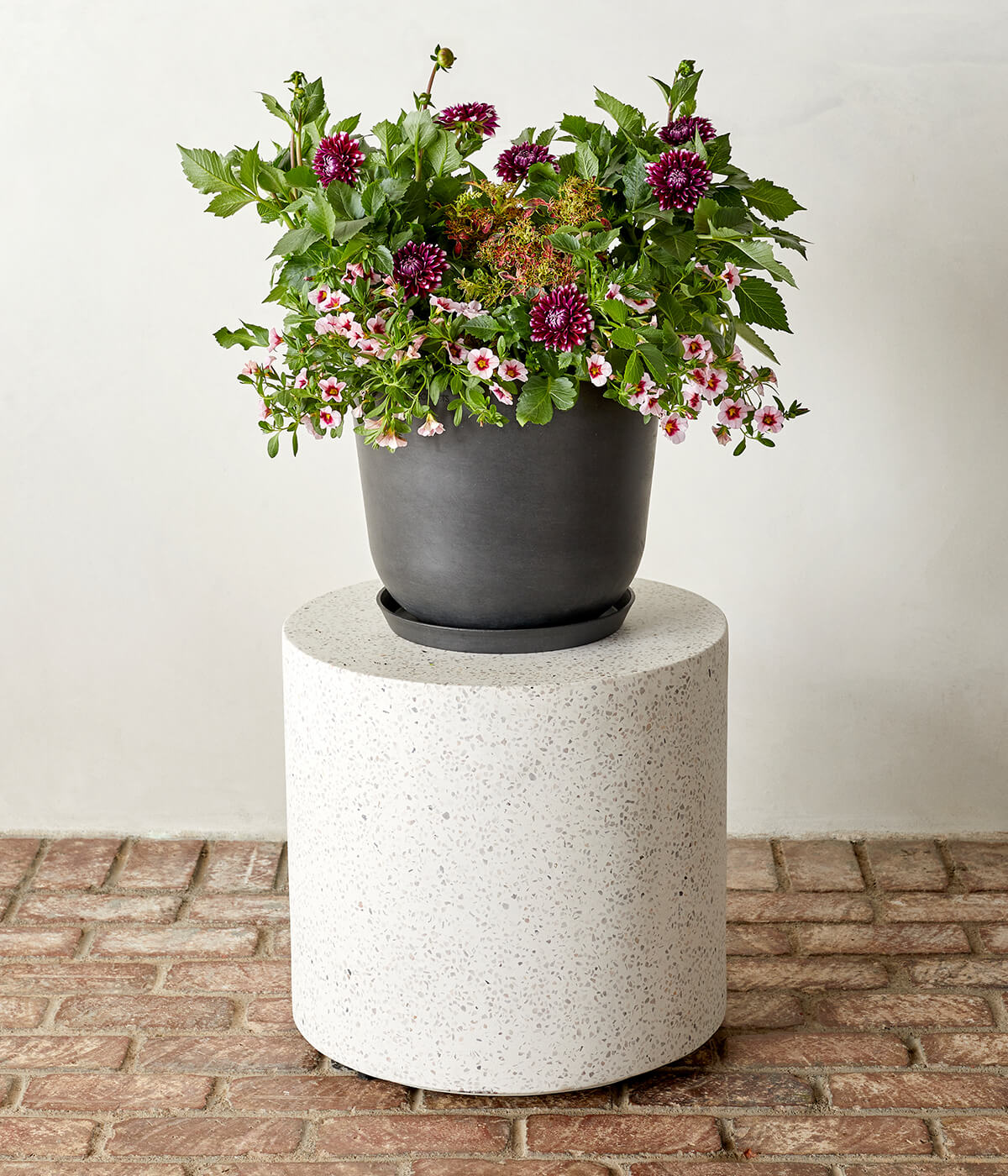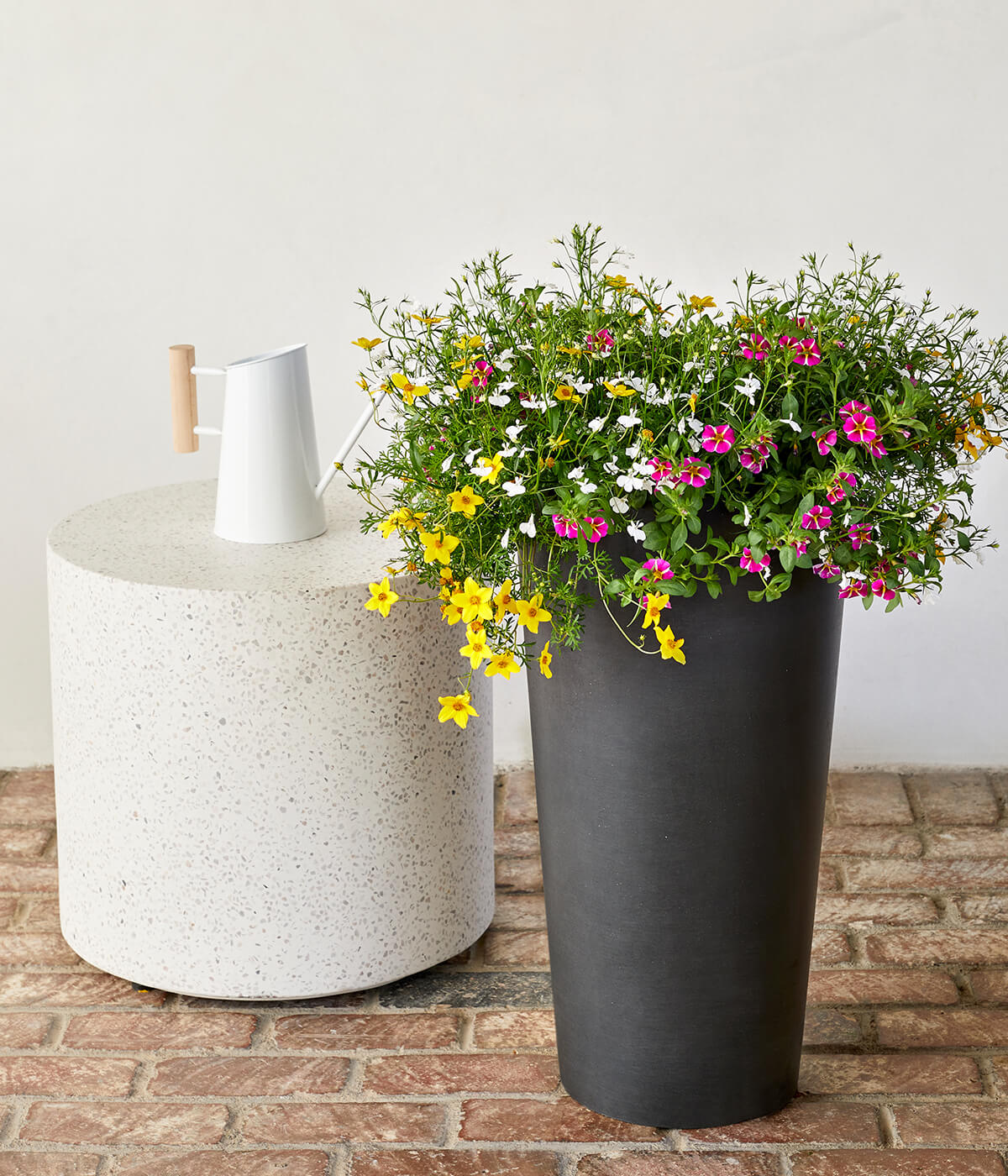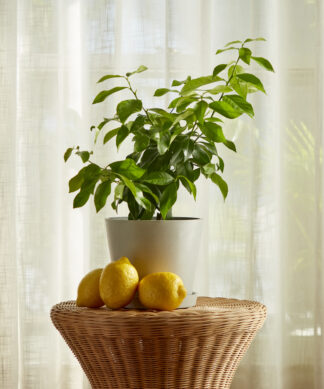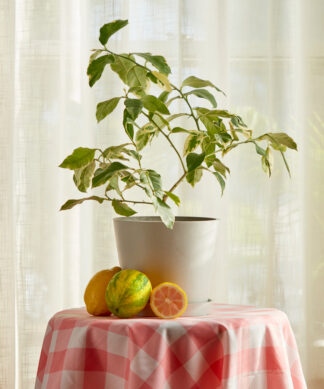How to care for your Petunia
Use these instructions to care for a Petunia. This guide will tell you how to water a Petunia; its light, temperature, humidity preferences and any additional care it might need to help it grow.
Petunia Double Wave White
Petunia Double Wave White grows best in full sun where they can receive at least 6–8 hours of direct sunlight.
Provide your Petunias with plenty of water as they do not like to dry out completely; water just before the soil is dry. During hot and dry times, more watering may be required, and during rainy times, less watering may be needed. Be sure to avoid splashing water on the foliage and blooms when watering, as this can cause diseases.
Fertilize 1–2 times a month using a liquid fertilizer or add a slow-release fertilizer to the soil according to instructions.
To encourage new flower growth on your Petunia Double Wave White, remove spent blooms in a practice known as deadheading. Removing the dead flowers will help promote additional growth throughout the season. If you notice your Petunias starting to get leggy or stretched out, feel free to trim the flowers and foliage back to promote growth. They will branch out and rebloom as a result. Be sure to fertilize regularly. Petunia Double Wave White grows best in an area that is sheltered from wind exposure.
Petunia Headliner Crystal Sky
Petunia Headliner Crystal Sky grows best in full sun where they can receive at least 6–8 hours of direct sunlight.
Provide your Petunias with plenty of water as they do not like to dry out completely; water just before the soil is dry. During hot and dry times, more watering may be required, and during rainy times, less watering may be needed. Be sure to avoid splashing water on the foliage and blooms when watering, as this can cause diseases.
Fertilize 1–2 times a month using a liquid fertilizer or add a slow-release fertilizer to the soil according to instructions.
To encourage new flower growth on your Petunia Headliner Crystal Sky, remove spent blooms in a practice known as deadheading. Removing the dead flowers will help promote additional growth throughout the season. If you notice your Petunias starting to get leggy or stretched out, feel free to trim the flowers and foliage back to promote growth. They will branch out and rebloom as a result. Be sure to fertilize regularly. Petunia Double Wave White grows best in an area that is sheltered from wind exposure.
Petunia Headliner Night Sky
Petunia Headliner Night Sky grows best in full sun where they can receive at least 6–8 hours of direct sunlight.
Provide your Petunias with plenty of water as they do not like to dry out completely; water just before the soil is dry. During hot and dry times, more watering may be required, and during rainy times, less watering may be needed. Be sure to avoid splashing water on the foliage and blooms when watering, as this can cause diseases.
Fertilize 1–2 times a month using a liquid fertilizer or add a slow-release fertilizer to the soil according to instructions.
To encourage new flower growth on your Petunia Headliner Night Sky, remove spent blooms in a practice known as deadheading. Removing the dead flowers will help promote additional growth throughout the season. If you notice your Petunias starting to get leggy or stretched out, feel free to trim the flowers and foliage back to promote growth. They will branch out and rebloom as a result. Be sure to fertilize regularly. Petunia Headliner Night Sky will grow best in an area that is sheltered from wind exposure.

















